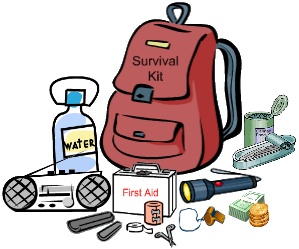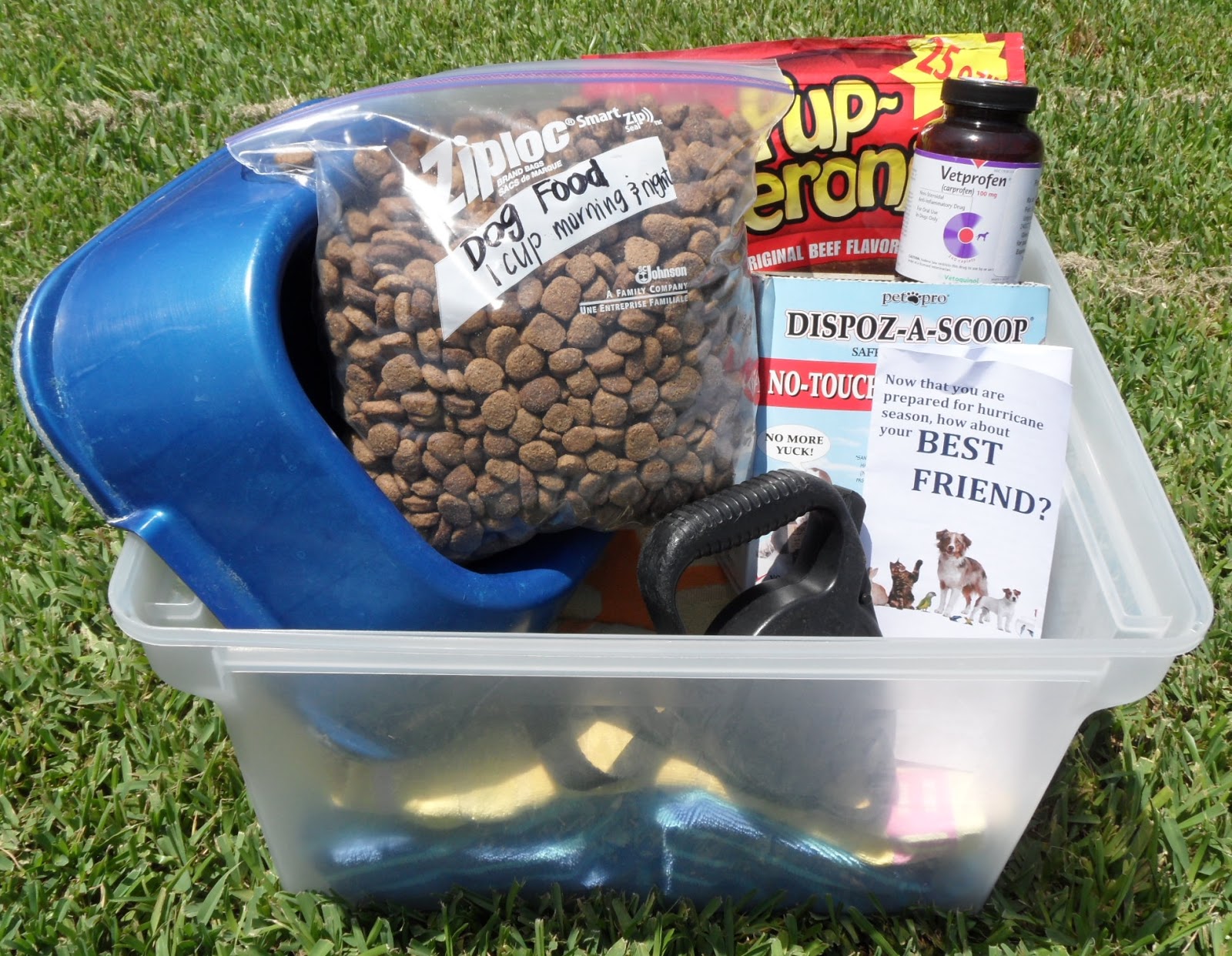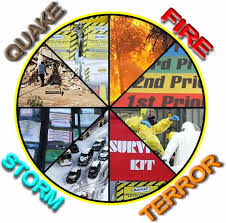09-09-14
How to Build an Emergency Kit
Nothing is more important than the safety and well being of your family. Throughout the month of September, the Los Angeles County Sheriff's Department will be providing tips on what you can do to prepare for a disaster before it strikes. This week we will be focusing on building a disaster kit.
When a disaster strikes our community, you may not have access to food, water, or electricity for weeks. Consider taking steps now to build an emergency supply kit. This way you can be prepared in the event something happens. You should have an emergency kit for each family member in your home. You should also have a kit in your office, school, and vehicle. You never know where you will be during an emergency.
You may already have many of these items in your home. Place these items in your kit so you will always know where they are located. Kits don't have to be fancy or expensive. Involve the whole family in looking for sale items to help complete your kits. Consider purchasing items from dollar stores and stock up during close-out sales.
The following information was compiled from numerous government resources.
QUICK TIPS
Consider storing two weeks-worth of food supplies. You may be able to use many of the canned goods and dry mixes already in your cupboard.
Store at least a 3-day supply of water for each member of your family that means 1 gallon per person per day.
Don't forget about pets; they'll need food and water too.
Learn where your gas, electric, and water shut-off locations are and how to turn them off.
Have at least one large fire extinguisher in your home.
Emergency Supply Kit
An emergency supply kit is simply a collection of basic items you might need during an emergency. It's good to involve whoever is going to use the kit, including children, to ensure the kit meets their specific needs.
Assemble the following items to create kits to use at your home, office, school and/or in a vehicle:
Waterone gallon per person, per day
Foodnonperishable, easy-to-prepare items
Flashlight
Battery powered or hand crank radio
Extra batteries
First aid kit
Medications (7-day supply), other medical supplies, and medical paperwork (e.g., medication list and pertinent medical information)
Multipurpose tool (e.g., Swiss army knife, Leatherman tool)
Sanitation and personal hygiene items
Copies of personal documents (e.g., proof of address, deed/lease to home, passports, birth certificates, and insurance policies)
Cell phone with chargers
Family and emergency contact information
Extra cash (small bills, as change may be hard to get)
Emergency blanket
Map(s) of the area
Extra set of car keys and house keys
Manual can opener
Special Needs
You may need some additional supplies to meet the needs of all family members, such as children, pets, and those with special medical requirements. Suggested items to help meet additional needs are:
Medical supplies (e.g., hearing aids with extra batteries, glasses, contact lenses, syringes, or a cane)
Baby supplies (e.g., bottles, formula, baby food, and diapers)
Games and activities for children
Pet supplies (see expanded list below)
Once you've gathered your supplies, pack the items in easy-to-carry containers, backpacks or gym bags. You should clearly label each container and store them where they are easily accessible. In a disaster situation, you may need quick access to your emergency supply kit. Make sure to check expiration dates on food, water, and batteries throughout the year.
Involving Children
Involving children is the first step in helping them know what to do in an emergency. There are many ways children can help.
Ask them to think of items they would like to include in an emergency supply kit, such as books or games or nonperishable food items.
Ask them to help you remember to keep the kits updated.
Children can help mark the dates on a calendar for checking emergency supplies. Remember to rotate or replace emergency food and water every six months and replace batteries as necessary.
Children can also help prepare plans and disaster kits for family pets.
Disaster Supply Checklist for Pets
Food and water for at least 3 days for each pet; bowls, and a manual can opener.
Depending on the pet you may need a litter box, paper towels, plastic trash bags, grooming items, and/or household bleach (non-scented).
Medications and medical records stored in a waterproof container.
First aid kit with a pet first aid book.
Sturdy leash, harness, and carrier to transport pet safely. A carrier should be large enough for the animal to stand comfortably, turn around, and lie down. Your pet may have to stay in the carrier for several hours.
Pet toys and the pet's bed, if you can easily take it, to reduce stress.
Current photos and descriptions of your pets to help others identify them in case you and your pets become separated, and to prove that they are yours.
Information on feeding schedules, medical conditions, behavior problems, and the name and telephone number of your veterinarian in case you have to board your pets or place them in foster care.
CERT Training
The Los Angeles County Fire and Sheriff's Departments have partnered to train residents in the FEMA Community Emergency Response Team (CERT) curriculum. This 24 hour course of instruction will help to educate and prepare you to take care of yourself, your family and your neighbors in the event of a disaster or emergency. The course includes instruction on emergency preparation, planning, first aid, and search and rescue. These classes are offered for free.
Graduates who want to help their communities during an emergency may sign up as CERT Disaster Worker Volunteers through their local Sheriff's Station. Kern and San Bernardino County residents may sign up through their local Fire Departments.
For more information on attending a CERT class in your area, go to: www.AntelopeValleyCERT.com, www.Fire.LACounty.gov , or cert-la@usa.net
For more information, check out the following websites:
www.lacounty.gov www.espfocus.org/
www.lasd.org www.publichealth.lacounty.gov/eprp/
www.palmdale.lasd.org https://snap.lacounty.gov
www.fire.lacounty.gov/ www.ready.gov
www.AntelopeValleyCERT.com www.community.fema.gov/
www.cert-la.com/ www.lacoa.org
Partner with us to fight crime and keep our community safe!
Text & Email, Register for LASD Nixle messages: To receive more detailed, up-to-date information via E-MAIL and/or TEXT directly from the Los Angeles County Sheriff's Department (LASD), sign up for "Nixle" alerts at http://www.Nixle.com and register for "LASD Headquarters Newsroom (SHB), Los Angeles County Sheriff" AND your local LASD station area. Or, to receive URGENT TEXT ALERTS ONLY, text your zip code to 888777. Standard text messaging rates may apply depending on your calling plan.
LA Crime Stoppers: Partner to prevent or report crime by contacting your local Sheriff's station. Or if you wish to remain Anonymous, call "LA Crime Stoppers" by dialing 800-222-TIPS (8477), texting the letters TIPLA plus your tip to CRIMES (274637), or using the website http://lacrimestoppers.org
 DisasterKit
DisasterKit
 PetDisasterKit
PetDisasterKit
 Disaster Preparedness
Disaster Preparedness

|